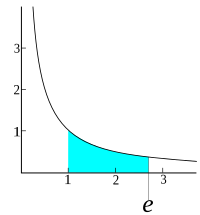
Photo from wikipedia
AIMS AND OBJECTIVES To evaluate the effects and safety of intermittent versus continuous control of cuff pressure in patients with mechanical ventilation. BACKGROUND Tracheal cuff pressure management is vital to… Click to show full abstract
AIMS AND OBJECTIVES To evaluate the effects and safety of intermittent versus continuous control of cuff pressure in patients with mechanical ventilation. BACKGROUND Tracheal cuff pressure management is vital to the prognosis of patients with mechanical ventilation. DESIGN A meta-analysis. METHODS This meta-analysis was conducted and reported according to the PRISMA checklist. We searched Pubmed, Embase, The Cochrane Library, BMJ Best Practice, Web of Science, ProQuest Dissertations, as well as the Chinese Biomedical Literature Database, Wanfang, and China national knowledge infrastructure databases up to 5 August 2022 for randomised controlled trials (RCTs) on the intermittent versus continuous control of cuff pressure. Review Manager 5.3 software was used for relevant data analysis. RESULTS A total of 18 RCTs involving 1998 patients with mechanical ventilation were included. The synthesised outcomes indicated that continuous control of cuff pressure is beneficial to reduce the incidence of ventilator-associated pneumonia (VAP) [RR = 0.41, 95%CI (0.35, 0.49)], aspiration [RR = 0.36, 95%CI (0.21, 0.63)], duration of mechanical ventilation [MD = -3.23, 95%CI (-4.66, -1.79)], length of ICU stay [MD = -4.12, 95%CI (-5.40, -2.83)], and increase the volume of subglottic drainage [MD = 18.54, 95%CI (16.50, 20.58)]. There was no significant difference in the mortality between two groups [RR = 1.01, 95%CI (0.84, 1.21)]. Egger regression analyses showed that there were no obvious publication biases in the synthesised results (all p > .05). CONCLUSIONS Existing evidence shows that compared with intermittent monitoring of cuff pressure, continuous monitoring of cuff pressure can reduce the occurrence of aspiration and VAP, shorten the patient's duration of mechanical ventilation and length of ICU stay. RELEVANCE TO CLINICAL PRACTICE Continuous monitoring of cuff pressure is more beneficial and should be promoted in clinical nursing care of patients undergoing mechanical ventilation.
Journal Title: Journal of clinical nursing
Year Published: 2023
Link to full text (if available)
Share on Social Media: Sign Up to like & get
recommendations!